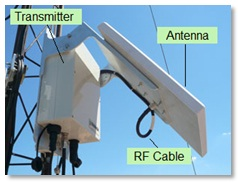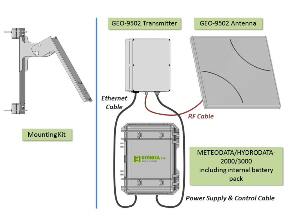INMARSAT
GEONICA has over 30 years of experience in remote control systems. Design and engineering are constantly evolving,
providing maximum satisfaction to clients. Our equipment is installed in remote and isolated areas; therefore, reliability,
minimum maintenance and low power consumption are the strengths of GEONICA’s designs.
Actually, GEONICA provides full compatibility to a wide variety of communication networks in order to entirely adapt
to each system’s requirements.
BGAN M2M is an INMARSAT service that allows users to connect to remote devices and applications at low data rates. It is entirely based on the current BGAN network and infrastructure and there are no changes to the INMARSAT provisioning process. This means that BGAN M2M will benefit from proven, reliable technology. BGAN M2M has the following technical advantages:
• Ubiquitous coverage with high levels of availability and performance in unmanned environments.
• Cost-effective alternative to terrestrial cellular networks: no coverage or saturated
• Power efficiency enabling operation
in power-deficient areas.
| The INMARSAT satellite terminal model 9502 provides
reliable connectivity over the Inmarsat Broadband
Global Area Network (BGAN) for IP SCADA and
machine-to-machine (M2M) applications. This terminal
delivers affordable, global, end-to-end IP data
connectivity enabling applications in industry sectors
such as environmental monitoring, SmartGrid,
pipeline monitoring, compressor monitoring, well
site automation, video surveillance, and out-of-band
management to primary site communications.
The exceptional low power consumption (<1 W idle)
of the satellite terminal model 9502 makes it possible
to provide end-to-end IP connectivity to sites
that are off the grid. This breakthrough provides
end-to-end IP connectivity to power-challenged locations
that rely upon solar battery arrays involving
sensitive power budgets. | 
|
| The Model 9502 includes 10 meters of RF cabling, granting the user freedom to position the antenna remotely and away from the transceiver in complex installations while securing the SIM card inside a premise or enclosure to better protect against unauthorized use, theft, and vandalism. Future firmware releases would be uncommon, meanwhile any such modem update will qualify for no charge over-the-air (OTA) upgrades saving customers time and money. | |
| The INMARSAT satellite terminal comprises:
▪ GEO-9502 Transmitter unit ▪ GEO-9502 Antenna ▪ Mounting kit ▪ Connection Cables:
|  |
INMARSAT UNIQUE FEATURES
|
|
|